This article is republished from the book Uncle John's 24-Karat Bathroom Reader.
The
unoccupied Demilitarized Zone separating North and South Korea has been
a tense place since the end of the Korean War in the 1950s. It's been
the site of periodic flare-ups, one of which involved a tree.
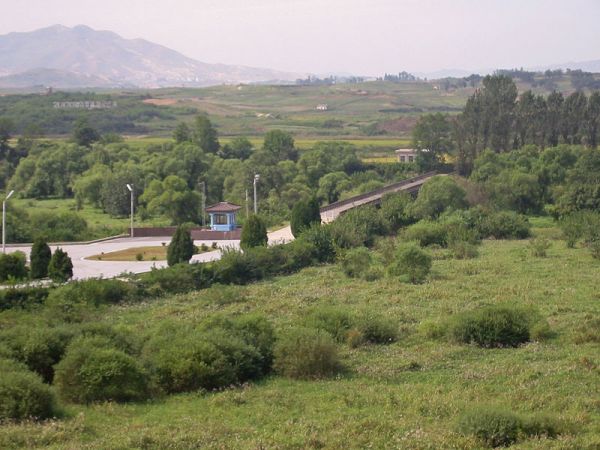 (Image credit: Wikipedia user Filzstift)
(Image credit: Wikipedia user Filzstift)For most of its history, Korea has been a single country, often a very powerful one. In the late 19th century, the nation lost its independence to Japan. At the time, Japan was trying to build a global empire, and Korea was a valuable strategic target. After World War II, the Japanese Empire fell apart, and the countries it once controlled became independent nations again. But a new conflict was developing: The Cold War between the United States and the Soviet Union. Korea's strategic location made it an important ally to both sides.

The United States assumed the administration of the southern part of Korea, taking steps to assure it would develop into a capitalist economy. American diplomats and politicians micromanaged the region's political process to produce leaders sympathetic to the West. At the same time, the Soviet Union oversaw the development of the north, and encouraged that part of Korea to develop along socialist lines. The split was formalized in 1948, when the north refused to participate in the United Nations-supervised free elections. Both sides claimed to be the only legitimate government on the Korean peninsula. The Korean War was fought over this issue, which led to two separate nations. To this day, South Korea claims that it lawfully controls North Korea, while North Korea believes the same about South Korea.
Technically, the Korean War never formally ended. There was no peace treaty -only an armistice that ended the shooting (it was temporary, but it's lasted since 1953) and established a two-mile wide DMZ, or Demilitarized Zone, as a neutral buffer between North Korea and South Korea.
STAY POSTED
Like all Cold War hot spots, the DMZ was rife with political intrigue and paranoia (and heavily guarded by troops). North Korea accused the South of periodically sending spies into the North, and in 1975 South Korea discovered secret tunnels that North Korea had built under the DMZ.
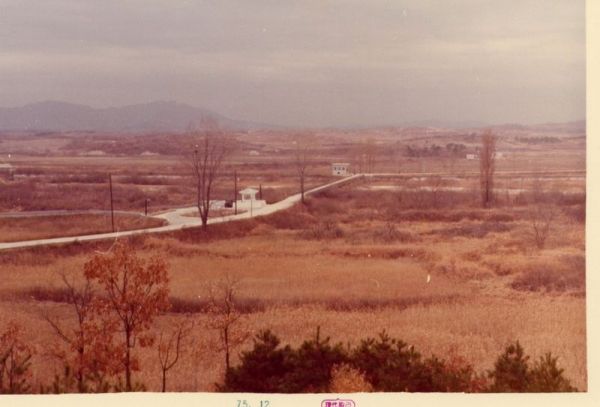 Command Post #3 in 1975.
Command Post #3 in 1975.
In
the early 1970s, the United Nations set up multiple command posts
within the DMZ to help control the situation. UN Command Post #3 was
critical. It was the northernmost post, situated within sight of North
Korean territory. North Korean soldiers had repeatedly attempted to
kidnap UN officials from Command Post #3, so soldiers stationed at the
southern end of the DMZ believed it was vital to keep a close eye on the
post at all times. Only problem: Commands Post #3 was surrounded by
dense foliage, which made the post impossible to observe during summer
months. One particularly troublesome poplar tree directly blocked the
view.
THE KOREAN AXE MASSACRE
THE KOREAN AXE MASSACRE
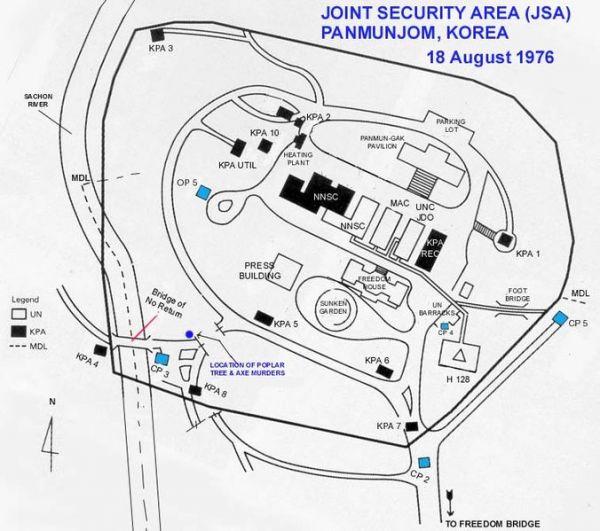
So on August 18, 1976, under UN orders, the South Korean military sent five soldiers, escorted by a dozen US troops, into the DMZ to chop down the poplar. Because soldiers are not allowed to carry firearms inside the DMZ, the squad carried only the axes and machetes they planned to use.
Just as troops began trimming the tree, a delegation of North Korean soldiers arrived at the site and demanded that the South Koreans drop their axes. The tree in question, they said, had been personally planted and tended by Kim Il Sung, North Korea's first "great leader." Despite repeated warnings from the North Koreans, the squadron from the South continued to chop… prompting the commanding officer of the North Korean detachment to order, "Kill them!"
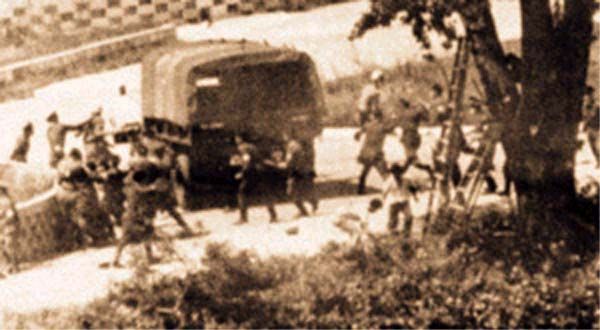
The South Korean troops immediately dropped their axes and attempted to flee. The North Koreans -unarmed because of the weapon-free DMZ rule- then picked up the axes and attacked the American escorts, killing the commanding officer, Capt. Arthur Bonifas, and fatally wounding Lt. Mark Barret, and injuring most of the South Koreans. United Nations soldiers at Observation Post #5, watching the proceedings unfold, recorded the entire incident on camera, and it was quickly reported to the leaders of North Korea and to the general public in South Korea. Through it all, the poplar tree remained standing.
THE ART OF WAR
Because two Americans had been killed, many expected the full military power of the United States to come down on North Korea. But waging all-out war would have been extraordinarily dangerous during the Cold War. Seoul, the bustling capital of South Korea, was located directly south of the DMZ, well within range of North Korean artillery. And while the US had superior air and sea power, North Korea maintained a close diplomatic relationship with China, which had tens of millions of troops that it almost certainly would have sent to aid North Korea.
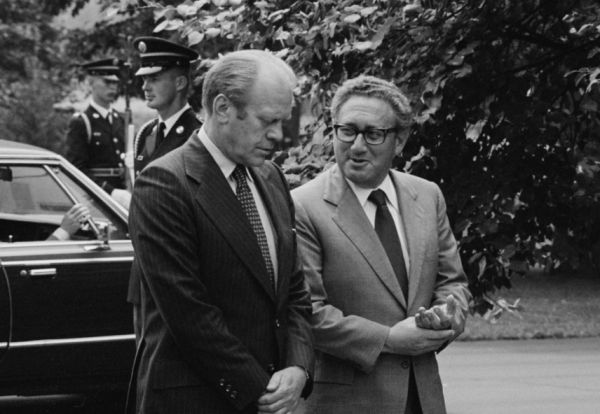
Henry Kissinger, then serving as both US Secretary of State and national security advisor to President Ford, was prepared to fight. He suggested to Ford that the best course of action would be a full-scale bombing campaign of the North. Kissinger believed that holding back would make the United States appear diplomatically and militarily weak. Ford, however, did not want to start a new Korean War, or worse, another world war, so he devised a solution that he hoped would allow the US to save face while avoiding a major escalation: Send in the troops… and chop down the tree.
TIMBER!
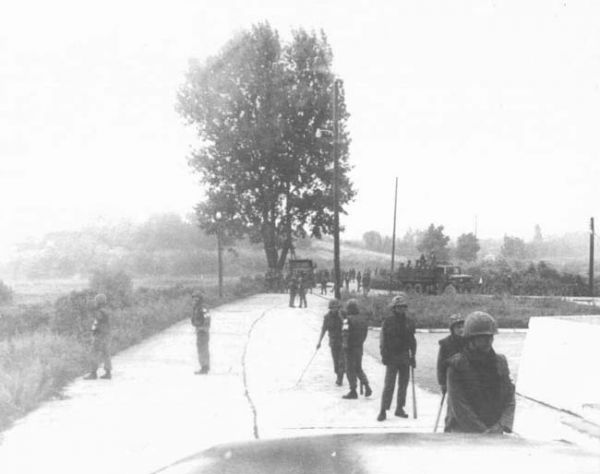
"Operation Paul Bunyan," as it was called, commenced on August 21, 1976, just three days after the original confrontation -which was being referred to as "the axe murder incident"- and involved a major military incursion into the DMZ. The primary "attack arms" consisted of two six-man units from the US Army Corps of Engineers, all armed with chain saws. Each unit was accompanied by a support unit of 30 heavily armed soldiers, and backed up by two dozen attack helicopters and a wing of B-52 Stratofortress bombers. Meanwhile, every military unit south of the DMZ was on high alert: Aircraft patrols were launched from air bases all over South Korea, and the USS Midway carrier group held a position just off the Korean Peninsula. Artillery units stood by to detonate critical bridges in the vicinity, and South Korean special forces ran secret scouting missions along the most critical areas of the DMZ. North Korea responded in kind, dispatching hundreds of sharpshooters and machine gunners to their forward posts along the DMZ. Northern forces set up machine-gun nests in view of Command Post #3.
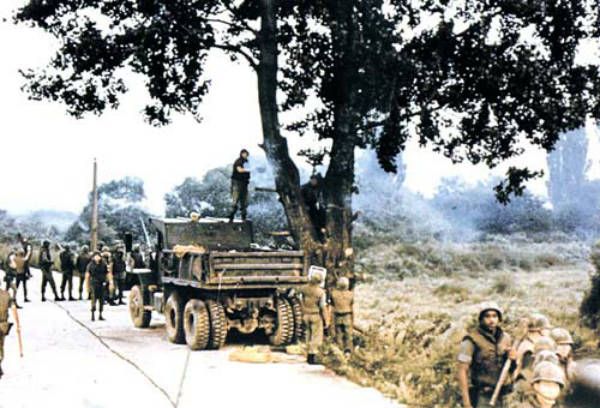
Despite the armed build up on both sides, the operation ended without incident. The poplar tree was chopped down in just under an hour. The chain-saw crew left a stump 19 feet high as a visible reminder of what had occurred there, and that was that.
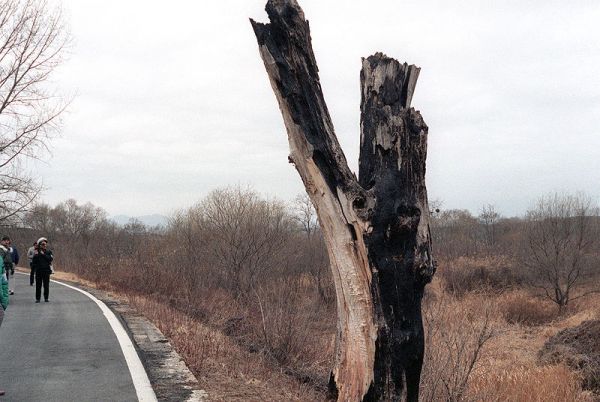
In
the mid-1980s, Command Post #3 was abandoned, and in 1987 the rest of
the stump was removed. But in its place, a small shrine -a stone
monument with a bronze plaque- was erected to honor the memory of the
two American soldiers who died there.

___________________
 The article above was reprinted with permission from Uncle John's 24-Karat Bathroom Reader.
The article above was reprinted with permission from Uncle John's 24-Karat Bathroom Reader.








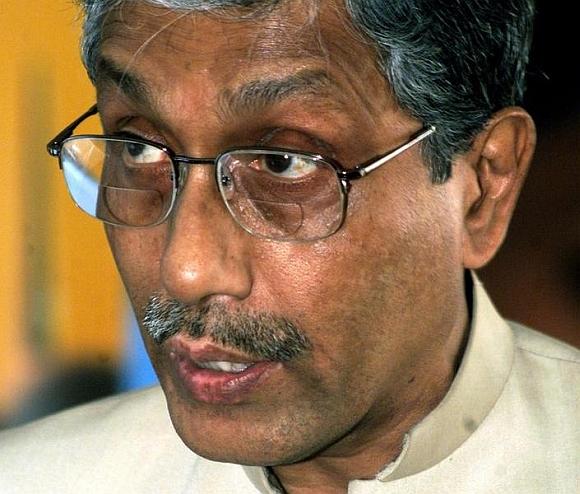
 Tripura
Chief Minister Manik Sarkar can arguably be dubbed 'the cleanest and
poorest' chief minister in the country with personal property, movable
and immovable, valued at less than Rs 2.5 lakh.
Tripura
Chief Minister Manik Sarkar can arguably be dubbed 'the cleanest and
poorest' chief minister in the country with personal property, movable
and immovable, valued at less than Rs 2.5 lakh.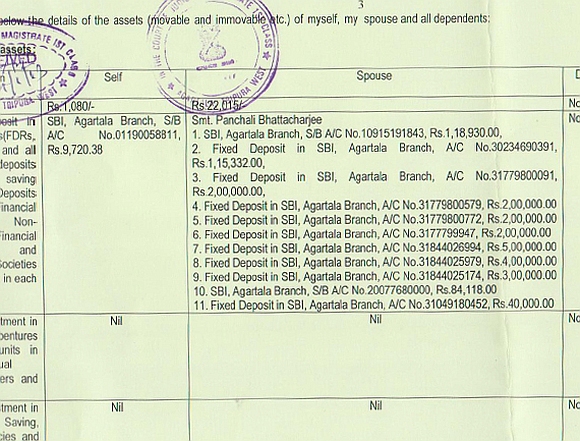
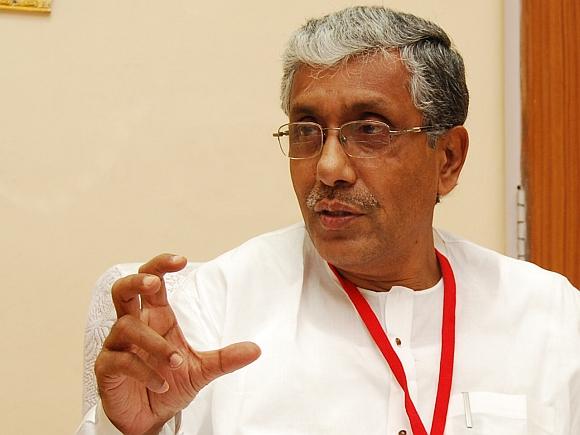
 Kolkata, Feb 5 : After winning the tiara as the Femina Miss India
(East), Darjeeling girl Sagarika Chhetri said she wanted to make the
youth of her home town, and the North East in general, proud.
Kolkata, Feb 5 : After winning the tiara as the Femina Miss India
(East), Darjeeling girl Sagarika Chhetri said she wanted to make the
youth of her home town, and the North East in general, proud.

